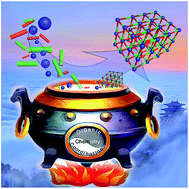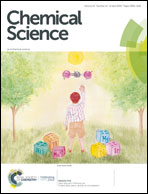Constructing new metal–organic frameworks with complicated ligands from “One-Pot” in situ reactions†
Abstract
Metal–organic frameworks (MOFs) have emerged as one of the most fascinating libraries of porous materials. In spite of their myriad merits, practical application of most MOFs is restricted due to their high preparation cost because of the complicated organic ligands involved. To address this limitation, we propose to use simple and cheap organic precursors to synthesize MOFs with complicated ligands via “one-pot” in situ reactions of these precursors along with the formation of new MOFs. In this work, we have carefully screened several organic reactions, through which target ligands were generated in situ from easily available reactants during the MOF construction. With this “one-pot” approach, the fabrication of a series of novel MOFs by integrating the organic covalent bond and the coordinate bond has thus been realized through the judicious selection of organic reactions, which effectively simplifies the MOF synthesis process and thus reduces the cost.

- This article is part of the themed collection: 2019 Chemical Science HOT Article Collection


 Please wait while we load your content...
Please wait while we load your content...